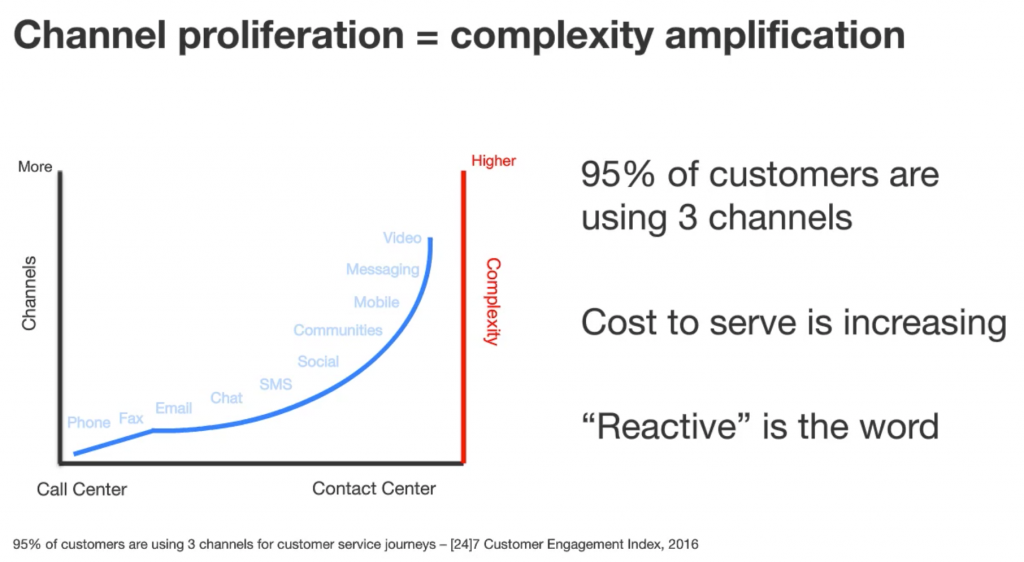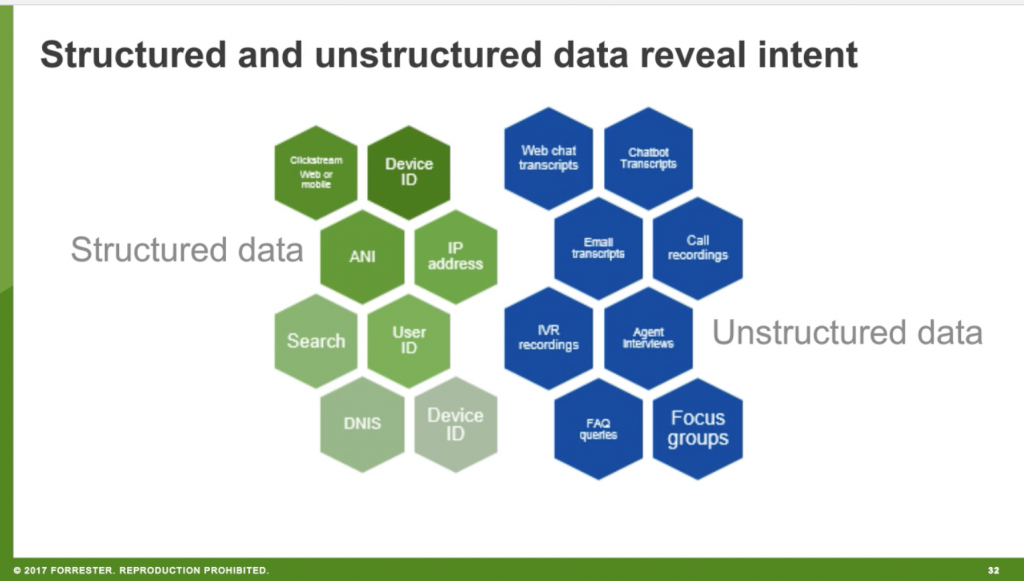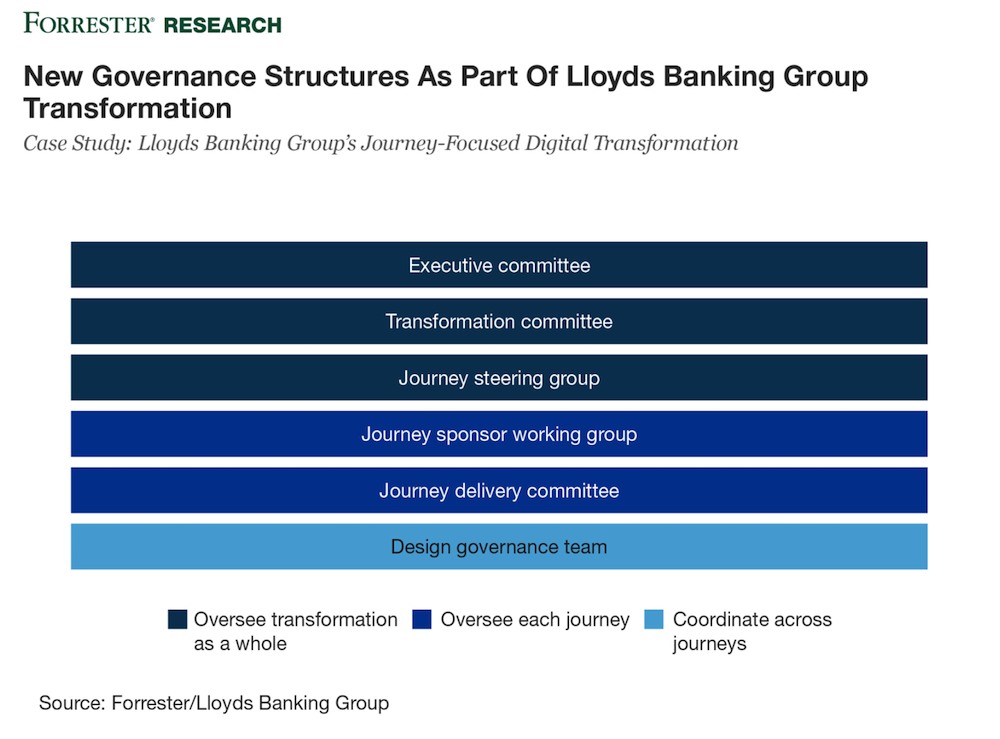Three years ago, Forrester Research expanded its customer experience index to include insights from multiple countries and diverse brands in order to tell companies how their customer experience ranks. To uncover Forrester’s latest insights into customer preferences and communication patterns, we teamed up with Art Schoeller, VP and principal analyst at Forrester, for a webinar on digital transformation in the contact center environment. For those who missed it, we’ve highlighted Art’s key messages and best practices for contact center leaders below.
Contact centers are transforming, reactively.
Once upon a time, contact centers of the past contained a rigidly routed voice-only channel as the single option for customer service and support. Customers were forced into one channel of communication and dealt with many inconveniences.
This is no longer the case, as contact centers now have multiple channels to support customers, with phone, email and chat options. However, the lack of context being transferred between channels is a challenge, often requiring customers to repeat their information and inquiry. When customers become frustrated with the additional effort required of them, it will likely impact their brand loyalty. As contact center leaders plan for the future, they must first understand the significant shift in customer expectations resulting from the digital world we now live in.
Digital consumers demand a digital contact center.
Customers today are fully mobile. They’re impatient. Why? Because they can be. They want what they want, and they want it now. They’re used to plenty of options (i.e., competition in the marketplace) and have enough options to easily switch to another brand or alternative solution if they become frustrated. Therefore, brands must stop looking at customer service teams as mere cost centers and prioritize customer service experiences as an opportunity to drive customer loyalty.

This is even more important as we move into the future. With the technology and innovation available, contact centers will eventually become “channel-less,” meaning the actual touch point used won’t matter. Once we reach this era, customer-centric contact centers will seamlessly be able to resolve customer inquiries with contextual customer data shared across the organization – and those that lagged in joining the digital transformation will be left behind in the dust of their competitors.
“It’s not technology. It’s much more (about) the organizational silos. It is much more understanding being insights-led. Being fast. Being innovative. Being able to collaborate and communicate.” -Art Schoeller, VP and principal analyst, Forrester
Humans remain a necessity in the digital, customer-centric contact center.
Despite the emergence of automation and chatbots for customer service, contact centers are anticipating future growth. In fact, Forrester found that 46% of contact center leaders are planning for a 5-10% increase in seats during the next year – with an additional 14% of contact center leaders anticipating more than 10% growth in seats. Self-service can be a great, cost-effective tool – it ensures agents are focused on the more difficult interactions that require more time, resources and consultative effort to resolve – but that doesn’t necessarily translate to fewer jobs.
Ready to begin your customer care transformation?
Three best practices for ensuring efficient and valuable digital disruption.
1. Automate wherever and whenever possible – but don’t forget the humans.
While chatbots are a great way to streamline inquiries that require less involvement from agents, this technology still requires active learning in a customer service context. Without data from the agent-customer conversation, machines cannot learn how to standardize the process.

2. Leverage unstructured data like web chats, conversations, IVR recordings and chatbot transcripts.
Structured data is common in the contact center but we need to move beyond traditional KPIs. In this digital era of invaluable customer data, contact centers need to figure out how to leverage contextual information to deliver personalized, convenient resolutions. (Hint: Technology like ours makes leveraging interaction data an easy process!)

3. Create governance structures.
This will help streamline collaboration with analytics and create journey maps to work across functions, enabling necessary groups to prioritize high-impact interactions. By sharing insights across the organization, contact centers can more easily visualize individual customer journeys – and consistently improve their customer experience as the evolution continues.

Image credits: Sparkcentral



